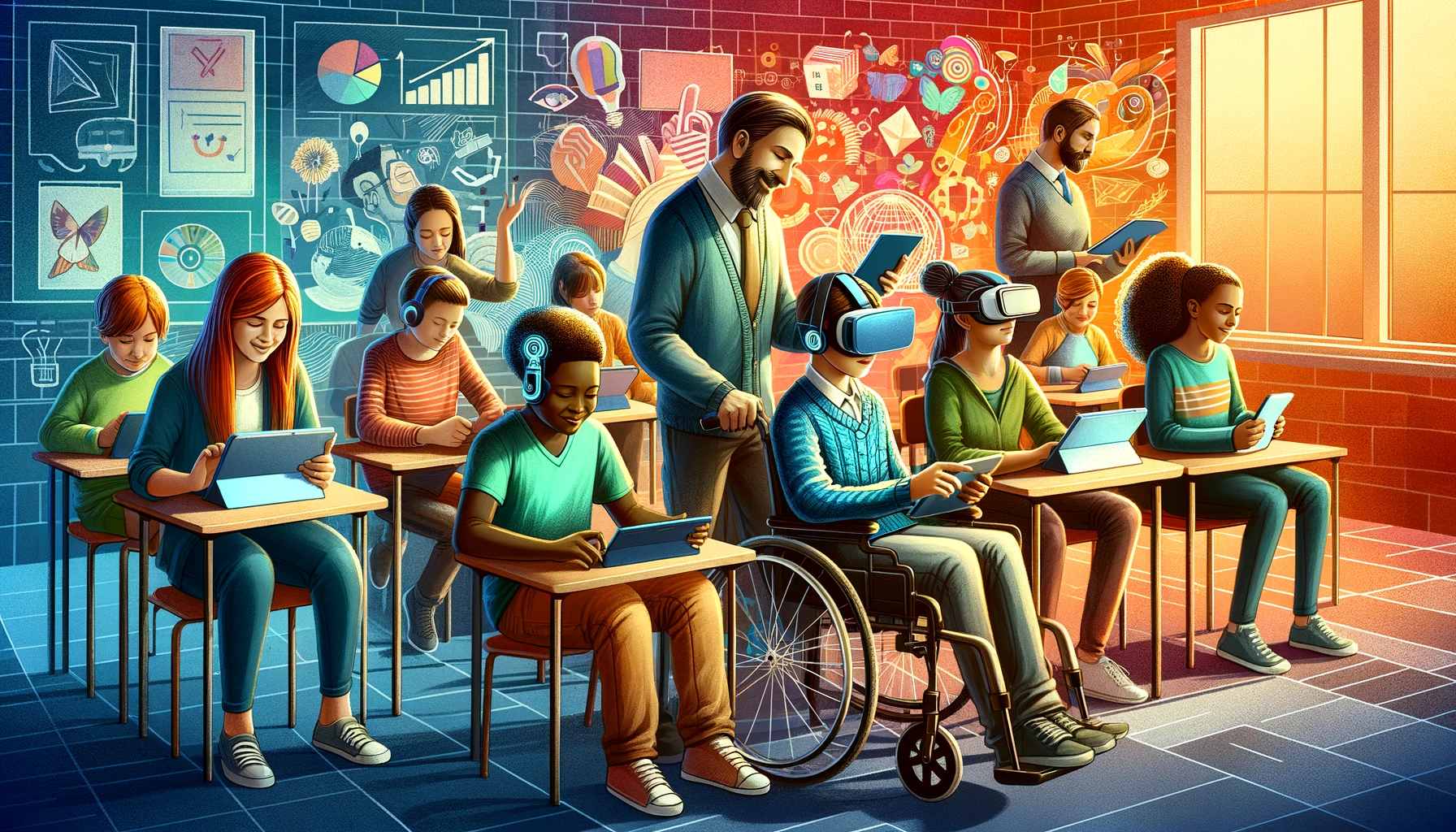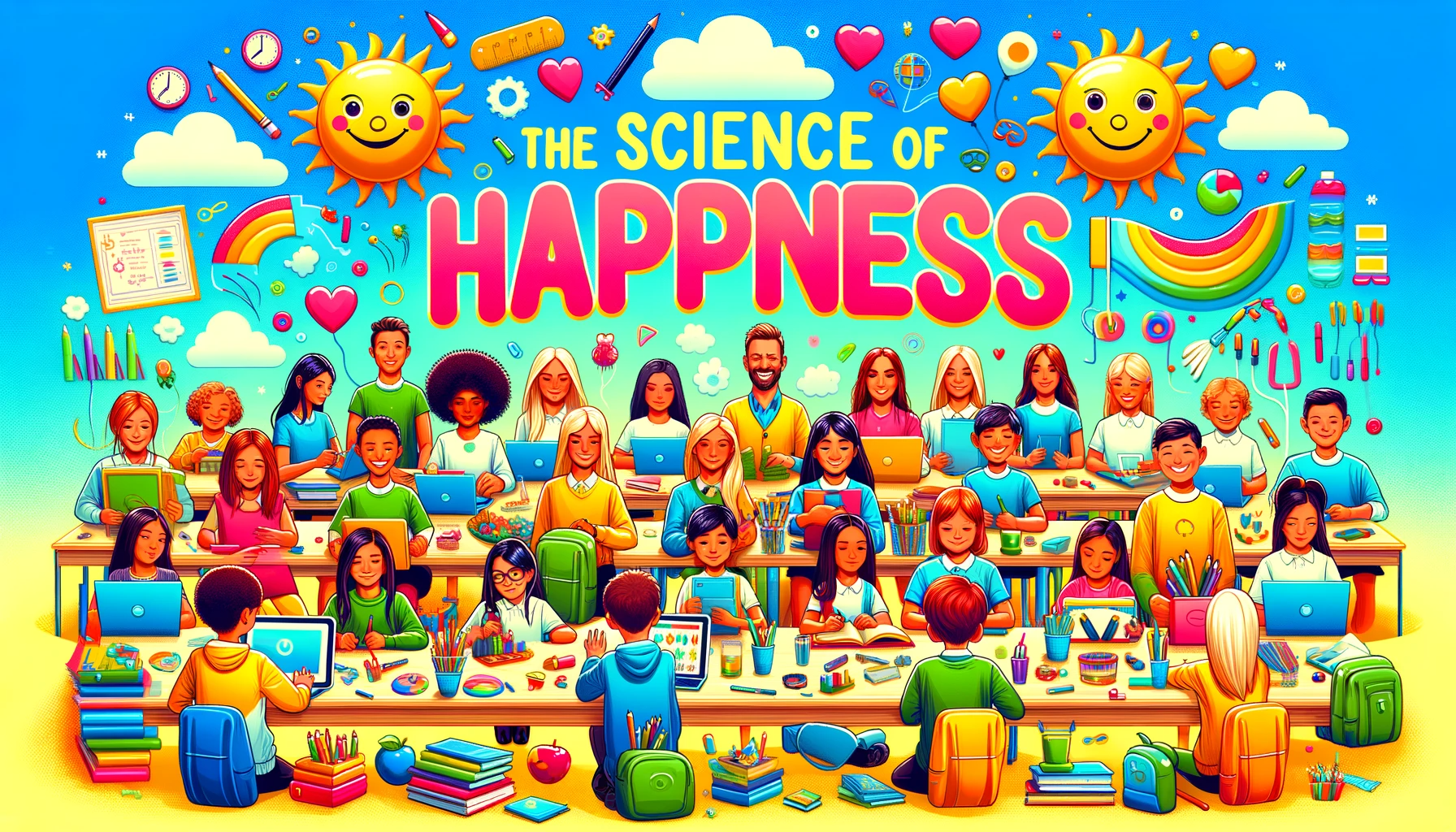
In the realm of education, the term ‘Differentiated Instruction’ stands as a beacon of innovation, emphasizing the customization of teaching methods to suit diverse learning styles. This pedagogical approach aims to cater to the unique needs of every student, fostering an inclusive environment that promotes student success.
Differentiated instruction, also known as differentiation, refers to an educational strategy that tailors teaching to individual students based on their unique strengths, needs, and learning preferences. This approach acknowledges the diversity of learners and aims to create a personalized and engaging educational experience.
In the landscape of education, a student-centred approach takes center stage. This methodology places students at the heart of the learning process, emphasizing active participation and collaboration. By incorporating differentiated instruction methods, educators can empower students to take ownership of their learning journey, enhancing engagement and knowledge retention.
Inclusive education goes hand in hand with differentiated instruction, fostering an environment where every student, regardless of their abilities or backgrounds, feels valued. Varied assessment methods become crucial in this context, allowing educators to gauge individual progress accurately and adapt teaching strategies accordingly.
Adaptive learning, a key component of differentiated instruction, leverages technology to tailor educational content to the specific needs of each student. This personalized approach accommodates diverse learning styles, ensuring that no student is left behind. Implementing adaptive education methods enhances the overall effectiveness of teaching strategies.
Effective pedagogy embraces the concept of varied assessment methods, recognizing that students showcase their understanding in different ways. By incorporating assessments tailored to individual strengths and preferences, educators gain deeper insights into student comprehension, enabling them to refine their teaching methods for optimal results.
Understanding Differentiated Instruction
The Concept of Differentiation
Differentiated instruction methods revolutionize the traditional educational paradigm by acknowledging the diverse needs of learners. This instructional approach, often referred to as ‘Differentiation,’ goes beyond one-size-fits-all teaching, recognizing that students have unique strengths, preferences, and learning styles.
Key Components: Personalization, Adaptability, and Individualization
Personalization in Teaching Strategies
At the core of differentiated instruction methods lies the key component of personalization. Educators tailor their teaching strategies to accommodate the individual needs and preferences of each student. This fosters a student-centred approach, promoting active engagement and optimizing the learning experience.
Adaptability through Varied Assessment Methods
Differentiated instruction emphasizes adaptability through the incorporation of varied assessment methods. Assessments are designed to gauge individual understanding, allowing educators to adjust their teaching strategies accordingly. This adaptability ensures that no student is left behind, contributing to overall student success.
Individualization of Instruction for Diverse Learning Styles
Individualized instruction is a cornerstone of differentiated instruction methods, recognizing the role of diverse learning styles in educational diversity. By tailoring instruction to the unique strengths and preferences of each learner, educators create an inclusive environment that accommodates various approaches to learning.
Role of Diverse Learning Styles in Educational Diversity
Student-Centered Education and Classroom Empowerment
Differentiated instruction methods champion a student-centered education model, empowering students to take an active role in their learning journey. Classroom empowerment cultivates a dynamic and collaborative environment, enhancing overall student engagement and success.
Effective Pedagogy and Varied Instructional Strategies
Educational diversity is maximized through effective pedagogy and varied instructional strategies. Differentiated instruction acknowledges that students respond differently to various teaching methods. By incorporating diverse instructional approaches, educators cater to a spectrum of learning styles, ensuring comprehensive understanding and retention.
Effective Differentiated Instruction Techniques
Differentiated instruction methods stand as a beacon of effective teaching, acknowledging the diverse needs of students. At the heart of this approach is tailored learning, a strategy that involves customizing teaching approaches to cater to individual strengths, preferences, and learning styles.
The Power of Personalization
In the realm of effective differentiated instruction techniques, personalization takes centre stage. Tailored learning approaches involve creating a personalized curriculum that addresses the unique needs of each student. This not only enhances engagement but also ensures that students receive a customized educational experience.
Innovative Teaching Methods for Varied Learners
Strategies for Varied Instructional Approaches
Innovation in teaching is crucial for reaching varied learners effectively. Employing varied instructional strategies ensures that educators can adapt to different learning styles. This includes incorporating hands-on activities, multimedia resources, and interactive discussions to create a dynamic and engaging learning environment.
Individualized Lesson Plans for Student Success
Individualization is a key tenet of effective differentiated instruction. Crafting individualized lesson plans tailored to the strengths and weaknesses of each student promotes a deeper understanding of the subject matter. This approach contributes to student success by addressing specific learning needs.
Strategies for Implementing Inclusive Practices
Inclusive Pedagogy for Different Learners
Inclusive education is seamlessly woven into the fabric of differentiated instruction methods. Implementing inclusive practices involves creating a learning environment that accommodates the diverse needs of all students. This may include incorporating universal design principles, fostering a sense of belonging, and addressing various learning styles.
Adaptive Education Methods for Student Engagement
Adaptive education methods play a pivotal role in ensuring student engagement. By adapting teaching strategies to the unique needs of learners, educators create an environment where every student feels empowered and involved in the learning process. This contributes to increased participation and overall academic success.
Personalised Learning for Diverse Students
Differentiated instruction methods pave the way for personalized learning, recognizing the diverse needs of students. A key element in this approach is personalized curriculum planning, which plays a pivotal role in tailoring education to individual strengths, preferences, and learning styles.
Tailored Educational Experiences
Personalized curriculum planning involves tailoring educational experiences to meet the unique needs of each student. By customizing lesson plans and learning materials, educators create an environment that fosters engagement and maximizes understanding. This student-centered approach goes beyond one-size-fits-all teaching, ensuring that diverse students receive the support they need for success.
Adaptive Education: Meeting Students Where They Are
Adaptive Education Methods Unleashed
In the realm of differentiated instruction, adaptive education methods shine as a beacon of flexibility and responsiveness. Meeting students where they are, adaptive education acknowledges that each learner progresses at their own pace. This approach involves adjusting teaching strategies, content, and assessments to suit individual progress, promoting a more inclusive and effective learning experience.
Strategies for Student Engagement
Adaptive education is not just about accommodating different paces; it’s about enhancing student engagement. Employing varied instructional strategies, such as interactive activities and multimedia resources, keeps students actively involved in their learning. This dynamic approach caters to diverse learning styles and ensures that the educational journey remains compelling for every student.
Student-Centered Instructional Strategies
Inclusive Practices for Student Success
Student-centred instructional strategies encapsulate the essence of differentiated instruction methods. By placing students at the core of the learning process, educators empower them to take an active role in their education. Inclusive practices within student-centered instruction create a sense of belonging, fostering an environment where diverse students thrive.
Effective Teaching Methods for Diverse Learning Styles
Implementing student-centered instructional strategies involves leveraging effective teaching methods that cater to diverse learning styles. Responsive teaching, incorporating activities that appeal to visual, auditory, and kinesthetic learners, ensures a well-rounded educational experience. This adaptability aligns with the principles of differentiated instruction, contributing to student success.
Classroom Practices for Diverse Learning Styles
Differentiated instruction methods serve as the cornerstone for flexible teaching approaches in the classroom. Recognizing the diverse learning styles of students, educators employ strategies that adapt to individual needs. This flexibility ensures that every student has the opportunity to thrive, promoting a dynamic and inclusive learning environment.
Responsive Teaching for Varied Learners
Flexible teaching approaches encompass responsive teaching, where educators adjust their methods based on the unique learning styles present in the classroom. This involves incorporating a mix of visual, auditory, and kinesthetic elements to cater to the diverse ways students absorb information. By being responsive to learning preferences, educators enhance overall comprehension and engagement.
Customized Lesson Plans for Student Success
Tailored Learning Experiences
At the heart of differentiated instruction methods lies the creation of customized lesson plans. These plans go beyond the traditional one-size-fits-all model, taking into account the individual strengths and weaknesses of each student. Tailored learning experiences are crafted to address specific needs, ensuring that students receive the support necessary for success.
Individualized Education Plans (IEPs) in Action
Implementing customized lesson plans often involves the use of Individualized Education Plans (IEPs). These plans outline specific goals, strategies, and accommodations for students with diverse learning styles. By following IEPs, educators can ensure that each student’s unique needs are met, contributing to overall student success.
Creating an Inclusive Environment for All Learners
Inclusive Teaching Practices
Creating an inclusive environment involves adopting teaching practices that embrace the diversity of learners in the classroom. Differentiated instruction methods play a crucial role in implementing inclusive teaching strategies. This may include incorporating diverse materials, providing options for demonstrating understanding, and fostering a sense of belonging for all students.
Benefits of Inclusive Classroom Practices
An inclusive environment benefits not only students with diverse learning styles but the entire classroom community. It promotes empathy, understanding, and collaboration among students, preparing them for a world that values diversity. Inclusivity is not just an educational practice; it’s a life skill that extends beyond the classroom.
Conclusion
Differentiated instruction methods, often referred to as differentiation, are a paradigm shift in education. They go beyond traditional one-size-fits-all teaching, acknowledging the diverse needs and learning styles of students. As we delve into a brief recap, it’s evident that differentiation is the key to fostering a dynamic and effective learning environment.
Inclusive pedagogy, a vital component of differentiated instruction methods, is not a destination but a journey of continual evolution. It encompasses practices that cater to the diverse needs of all learners, fostering an environment where every student feels valued and included. The ongoing evolution of inclusive education is a testament to the commitment to adapt and improve for the benefit of students.
FAQs
What is differentiated instruction?
Differentiated instruction is an educational approach that tailors teaching methods, content, and assessment to cater to diverse learning needs within a single classroom. It recognizes that students have different abilities, interests, and learning styles, aiming to create an inclusive and effective learning environment.
How does personalized learning benefit students?
Personalized learning benefits students by tailoring educational experiences to their individual needs, interests, and learning styles. This approach fosters engagement, motivation, and a deeper understanding of subjects, leading to improved academic performance and overall student success.
What are adaptive education methods?
Adaptive education methods involve adjusting teaching strategies, content, and assessment to cater to individual student progress and needs. This dynamic approach ensures that each student learns at their own pace, promoting a more inclusive and effective learning experience.
Why is inclusive teaching important?
Inclusive teaching is crucial because it creates a learning environment that accommodates the diverse needs of all students. It promotes a sense of belonging, fosters empathy, and prepares students for a world that values diversity, contributing to a positive and enriching educational experience.
How to tailor instruction to diverse learners?
Tailoring instruction to diverse learners involves recognizing and accommodating different learning styles, abilities, and interests. Educators can use varied instructional strategies, provide multiple means of representation, and offer flexible learning options to address the individual needs of students.
What are effective student engagement techniques?
Effective student engagement techniques include interactive activities, real-world applications, technology integration, and collaborative learning. These strategies captivate students’ interest, promote active participation, and enhance overall comprehension.
Can varied assessment methods improve learning outcomes?
Yes, varied assessment methods can significantly improve learning outcomes. They provide a more comprehensive view of student understanding, offer real-time feedback, and accommodate diverse learning styles, fostering a deeper and more nuanced grasp of the subject matter.
How to implement student-centered education?
Implementing student-centered education involves placing students at the core of the learning process. This includes encouraging active participation, fostering self-directed learning, and tailoring educational experiences to individual needs and preferences.
What are the benefits of diverse learning styles?
Diverse learning styles contribute to a more inclusive and effective learning environment. They allow educators to tailor instruction to individual preferences, ensuring that students can engage with and understand the material in ways that suit their unique learning preferences.
How does customized curriculum enhance student success?
Customized curriculum enhances student success by addressing individual strengths, weaknesses, and learning styles. It ensures that educational content is relevant, engaging, and tailored to meet the specific needs of each student, ultimately promoting a deeper understanding and mastery of the material.
Are there strategies for inclusive classroom practices?
Yes, strategies for inclusive classroom practices include creating a welcoming environment, incorporating diverse materials, providing flexible learning options, fostering collaboration, and offering support for students with varying abilities and learning styles.
How to empower students through adaptive pedagogy?
Empowering students through adaptive pedagogy involves giving them a sense of control over their learning experiences. This includes allowing for self-paced learning, providing choices in assignments, and incorporating adaptive technologies that cater to individual needs.
What are the best practices for individualized instruction?
Best practices for individualized instruction include conducting assessments to understand students’ needs, creating personalized learning plans, providing targeted support, and fostering open communication between educators, students, and parents.
How to manage learning diversity in the classroom?
Managing learning diversity in the classroom involves employing flexible teaching approaches, incorporating varied instructional strategies, providing additional support when needed, and fostering a culture of respect and understanding among students.
What are the key components of flexible teaching?
Key components of flexible teaching include adaptability to diverse learning needs, incorporating multiple instructional methods, providing alternative learning options, and adjusting teaching approaches based on ongoing assessments of student progress and comprehension.






